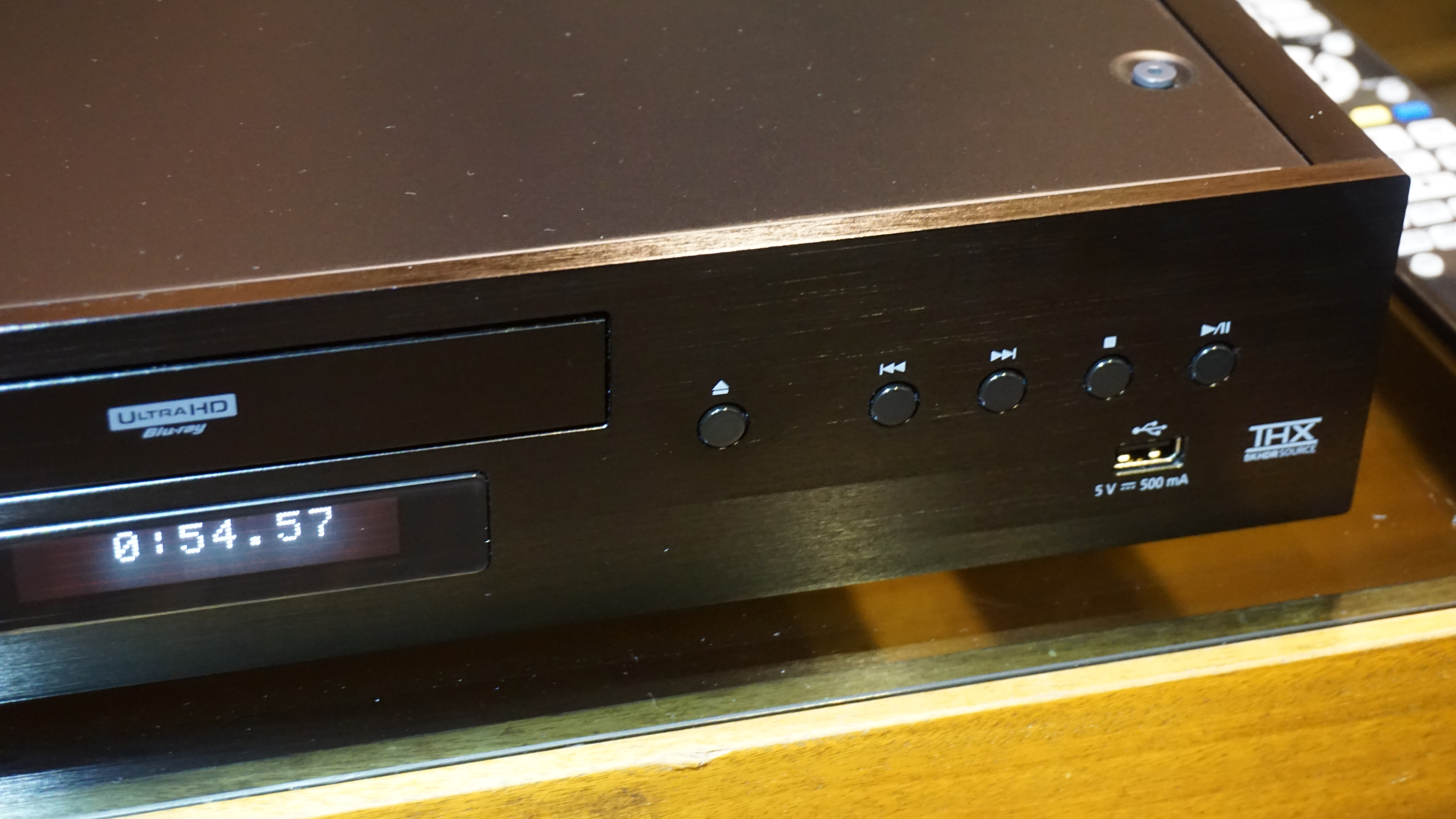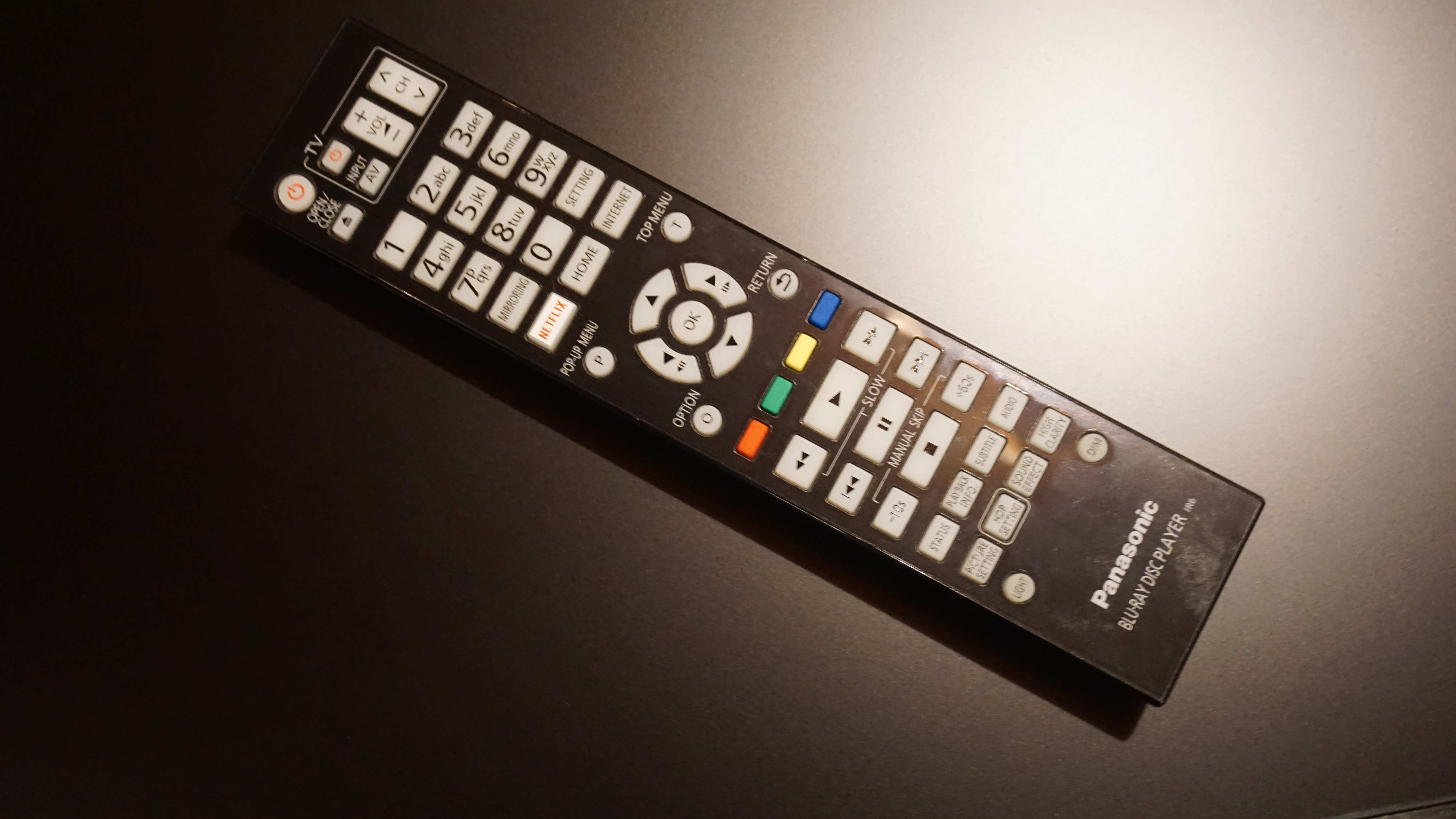Hands on: Panasonic DP-UB9000 review
The Panasonic DP-UB9000 is the company’s latest flagship 4K Ultra HD Blu-ray player and, after Oppo started winding down its competing devices, the new model finds itself in a fortuitous position. The absence of Oppo has created a gap at the high-end player market, one that the Panasonic is perfectly suited to fill.
The UB9000 promises state-of-the-art 4K playback thanks to Panasonic’s HCX processor, which supports High Dynamic Range (HDR) and offers a new HDR Optimiser feature. It will also be one of the few players to support both Dolby Vision and HDR10+ dynamic metadata, and the only one to include THX certification.
There’s a serious level of build quality, with a rigid chassis that uses a proprietary design, and the player has audiophile aspirations as well. So you get high quality DACs, two-channel and 7.1-channel analogue outputs, and high resolution audio support. Throw in a host of smart features, and the UB9000 starts to tick plenty of high-end boxes.
Naturally all these flagship features don’t come cheap, but if the UB9000 is as good as it appears on paper, then it could be the ideal replacement for those lamenting Oppo’s departure.
Design

The UB9000 certainly looks the part, thanks to an attractive and fashionably minimalist design. The front and side panels are made of aluminium, while the top and bottom both use a dual-layer metal construction. The result is a supremely well-made player, with the tank-like build quality expected of a high-end product.
The chassis is specifically designed to have a low centre of gravity, thus ensuring minimal resonance, while the increased rigidity reduces vibrations. The player uses a centrally mounted disc drive with a rigid base mounted on a thick steel plate. The result is a disc tray that smoothly glides in and out, and a player that is very quiet in operation.
The front is dominated by the centrally mounted disc drive, with a large and informative display directly underneath. On the far left you’ll find the power button, while over on the right are the eject, skip backwards/forwards, play/pause, and stop buttons. The player itself comes in black and has a lovely brushed-metal finish.
Aside from a single USB port on the front, all the other connections are at the rear. Here you’ll find twin HDMI outputs: one for video and audio, and one for just audio. There is also another USB port, along with optical and coaxial digital outputs. The player has an Ethernet port for a wired connection, but naturally there’s also built-in Wi-Fi.
However it isn’t all about digital, and the UB9000 has some serious analogue capabilities as well. You’ll find a dedicated two-channel output that uses both RCA and balanced XLR connectors, along with a full set of 7.1-channel analogue RCA outputs. It’s a fairly niche requirement these days, but if analogue is your thing, then the UB9000 has you covered.
Features

The UB9000 supports most disc formats, including Ultra HD Blu-ray, 3D Blu-ray, Blu-ray, DVD and CD. It isn’t a universal player, however, so you don’t get SACD and DVD-Audio playback; nor can it be added at a later date.
The player uses the second generation of Panasonic’s HCX (Hollywood Cinema Experience) processor, which has been specifically designed for 4K playback. This processor includes a 4K high precision edge-adaptive chroma processor, optimised for both BT.709 and BT.2020, and improved chroma upsampling. That basically means improved colour detail in English.
The Panasonic not only supports 4K discs and video streaming services, but can also upscale lower resolution content to 4K. It’s compatible with High Dynamic Range, specifically HDR10, HDR10+ and Dolby Vision. It can also convert HDR to SDR if necessary, and strip-out HDR for 4K, 10-bit, or BT.2020 playback (the latter is a handy feature for 4K projectors).
Since the UB9000 isn’t available until October, Panasonic expect all the new features to be available right out of the box by release date, or via an immediate firmware update.
The big new feature on the UB9000 is Panasonic’s HDR Optimiser, which is designed to tone map content to match the capabilities of your display. TVs and projectors with limited brightness often struggle to tone map HDR content correctly, which results in clipping or a loss in colour saturation. Panasonic believes that the tone mapping in their players is often better than many TVs, and this new feature allows you to take advantage of it.
It’s worth noting that all of these video enhancements are also available on the cheaper Panasonic DP-UB820, so if you’re on a limited budget you don’t need to buy the UB9000 to get the benefit of features like the HDR Optimiser. However Panasonic’s engineers did cryptically allude to some exclusive video features being added to the UB900 before its launch in October.
In terms of audio, the player includes an HDMI low clock jitter process and supports high-resolution formats, including DSD (11.2MHz/5.5MHz/2.8MHz), ALAC, FLAC, WAV, and AIFF. The UB9000 has also been designed to boost the sound quality of lower resolution content, thanks to High Clarity Sound Premium, Digital Tube Sound with upsampling and 192kHz/96kHz Surround Re-master.
It’s the UB9000’s capabilities with analogue audio that really differentiates this player from the rest of Panasonic’s range. It has a dedicated audio power supply, which is separate from the digital power supply, along with an isolated local power supply for the high quality 768kHz/32-bit DAC (digital-to-analogue converter). There are audiophile components used throughout and a new balanced circuit board for the analogue outputs that is designed to reduce signal noise.
Performance

Panasonic showcased their new HDR Optimiser at a recent technical demonstration. The feature is turned off by default but when switched on, it is set to 1000 nits. That means content mastered at 4,000nits is tone mapped to 1,000nits for TVs capable of that level of peak brightness. For lower settings 1000 nits content will also be tone-mapped accordingly.
In the menu you can choose between the default 1000 nits setting (Middle or High Luminance LCD), a 1500 nits setting (Super High Luminance LCD) and a 500 nits setting (Basic Luminance LCD and Projector). There is also a setting called OLED, which has been specifically designed for that technology’s peak brightness of around 800 nits.
In the demonstration, Panasonic connected the UB9000 to its EZ1002 OLED TV and used the film Pan (which is mastered at 4000 nits) to show the effectiveness of the HDR Optimiser. In highly saturated scenes with a lot of colour, the HDR Optimiser was able to tone map the content with a high degree of precision, thus retaining the colour saturation without clipping the peak highlights or adversely affecting the darker parts of the image.
In various scenes where the sun appeared through brightly lit and highly colourful clouds, it retained a clearly defined circle. Conversely in a dark scene set in a ship’s cabin, the shadows revealed detail while the colours outside the windows retained their saturation.
The usefulness of the HDR Optimiser will largely depend on the capabilities of your HDR TV, but it will certainly benefit those with lower luminance displays, where the tone mapping can often struggle to accurately render detail. Of course in order to choose the correct HDR Optimiser setting, it does rather depend on the user actually knowing their display’s peak luminance.
Panasonic also demonstrated the UB9000’s audio capabilities by connecting it to a Technics amplifier and speaker combination using RCA cables. The demo started with Panasonic using the UB9000 as a CD player and the quality of the analogue audio was immediately apparent, with a clear and detailed stereo presentation that retained exceptional clarity.
After playing a number of CDs to demonstrate the player’s flexibility with various musical styles including rock, pop and jazz, Panasonic then put on a high-res audio file via USB. Once again the superior sound performance of the UB9000 was evident, as was the capability of the high quality DAC. There’s no doubt that when paired with the right equipment, this 4K Blu-ray player is sure to please even the most demanding audiophile.
Early verdict
The Panasonic DP-UB9000 is every inch the high-end player, with the kind of superior engineering that goes some way towards justifying its fairly hefty price tag. The extensive disc playback, state-of-the-art video processing and comprehensive HDR support all help to create a player that will appeal to the discerning AV enthusiast.
It’s true that the cheaper DP-UB820 offers exactly the same video performance as the UB9000, but the cheaper model doesn’t have that impressive level of build quality. The UB820 also can’t deliver the same audiophile performance that makes the UB9000 one of those rare players that is ideal for both movies and music.
Oppo’s departure from the 4K Blu-ray player market may have been serendipitous for Panasonic, but, based on what we have seen to date, the UB9000 would still have given Oppo’s models a run for their money. As it is, if you’re looking for a high-end player that combines cutting-edge video with audiophile performance, then the UB9000 really is the only game in town.
The Panasonic DP-UB9000 will be available starting in October, with UK pricing set at £899.
0 comments:
Post a Comment